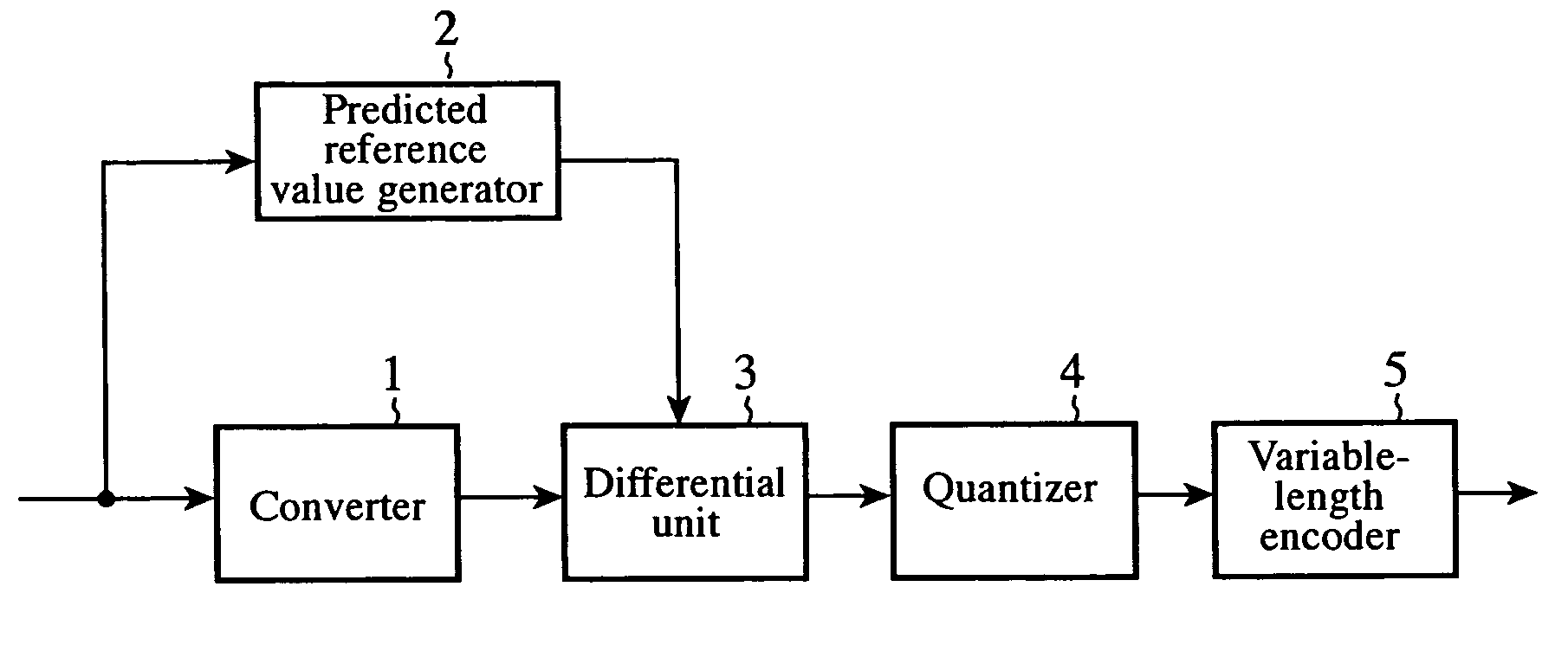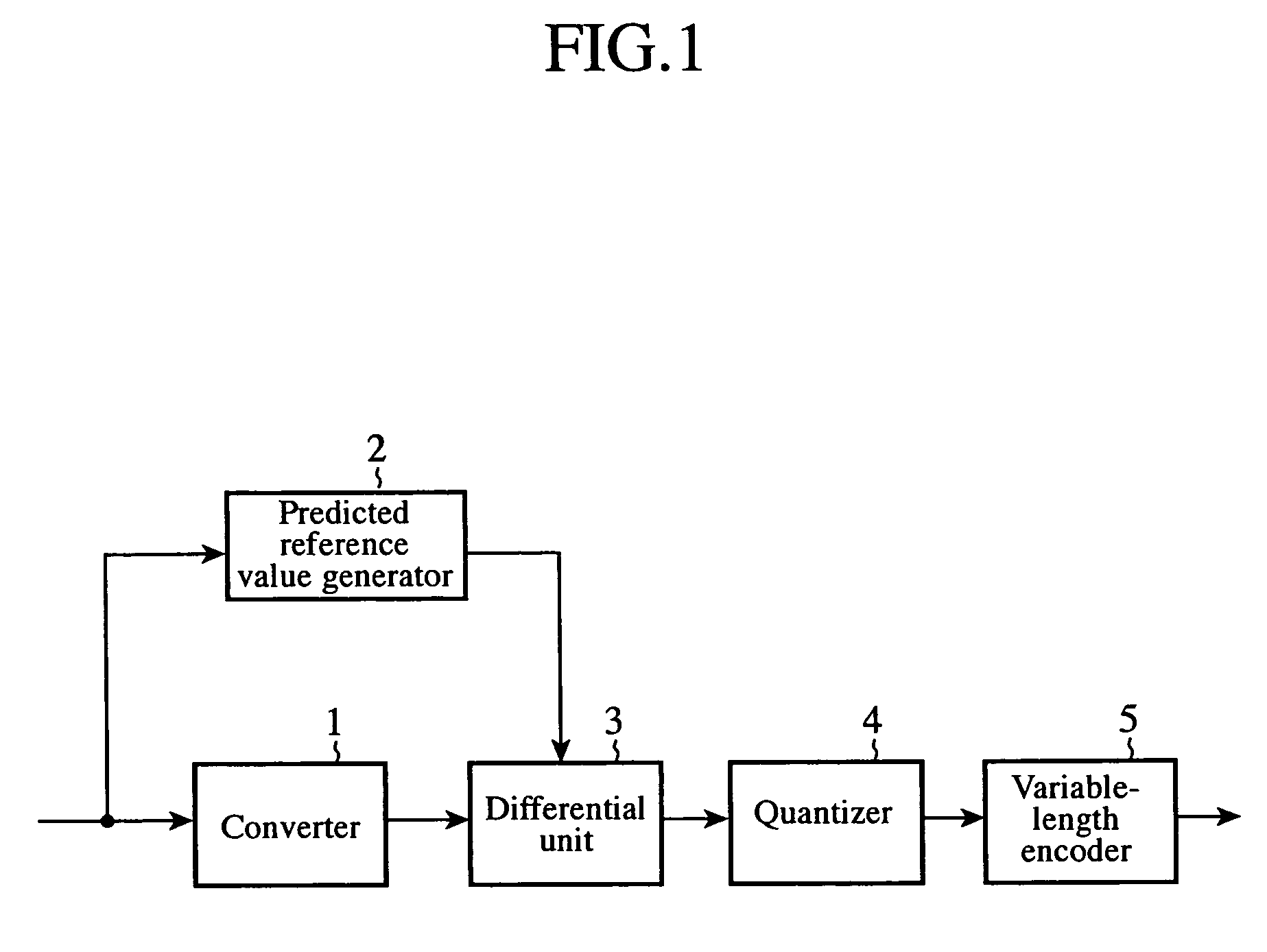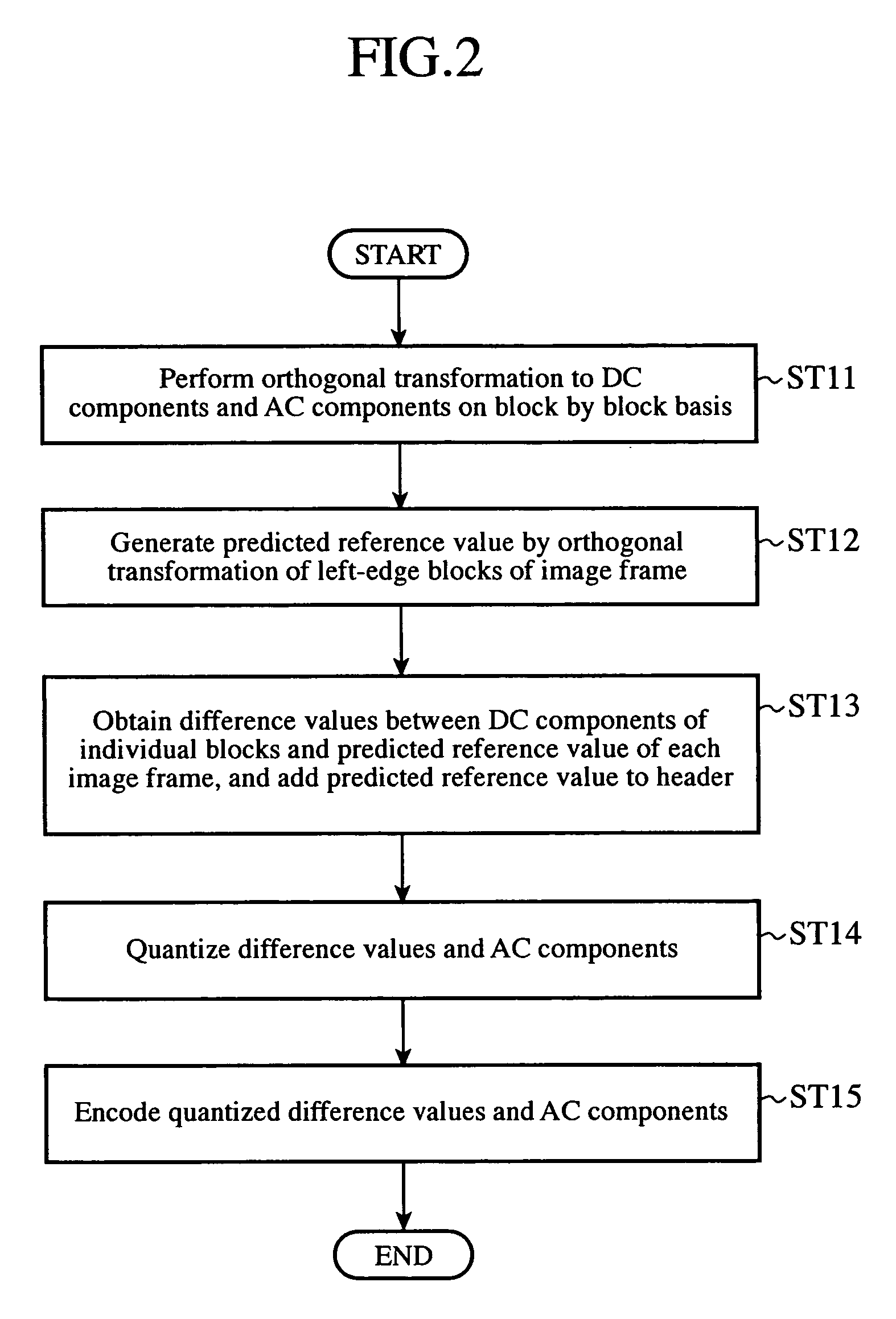Image encoding apparatus and image decoding apparatus
a technology of image encoding and decoding apparatus, which is applied in the direction of electrical apparatus, instruments, computing, etc., can solve the problems of reducing the encoding efficiency and the inability of conventional image encoding apparatus to carry out highly efficient encoding, and achieve the effect of high-efficiency encoding
- Summary
- Abstract
- Description
- Claims
- Application Information
AI Technical Summary
Benefits of technology
Problems solved by technology
Method used
Image
Examples
embodiment 1
[0023]FIG. 1 is a block diagram showing a configuration of an image encoding apparatus of an embodiment 1 in accordance with the present invention. The image encoding apparatus has a converter 1, predicted reference value generator 2, differential unit 3, quantizer 4 and variable-length encoder 5.
[0024]Next, the operation will be described.
[0025]FIG. 2 is a flowchart illustrating a flow of the processing of the image encoding apparatus of the embodiment 1 in accordance with the present invention. At step ST11, the converter 1 receives an image signal of a still image or moving image, and carries out orthogonal transformation on a predetermined block by block basis, thereby converting the image signal of each block to a DC component and AC component.
[0026]At step ST12, the predicted reference value generator 2 receives the image signal, carries out the orthogonal transformation of left-edge blocks of the image frame, and obtains the average value of the DC components transformed, the...
embodiment 2
[0033]FIG. 4 is a block diagram showing a configuration of an image encoding apparatus of an embodiment 2 in accordance with the present invention. The image encoding apparatus includes a converter 1, predicted reference value generator 2, differential unit 3, quantizer 4, variable-length encoder 5 and predicted value selector 6.
[0034]Next, the operation will be described.
[0035]FIG. 5 is a flowchart illustrating a flow of the processing of the image encoding apparatus of the embodiment 2 in accordance with the present invention. At step ST21, the converter 1 receives an image signal of a still image or moving image, and carries out orthogonal transformation on a predetermined block by block basis, thereby converting the image signal of each block to a DC component and AC component.
[0036]At step ST22, the predicted reference value generator 2 receives the image signal, carries out the orthogonal transformation of left-edge blocks of the image frame, and obtains the average value of t...
embodiment 3
[0043]The block diagram showing the configuration of the image encoding apparatus of the embodiment 3 in accordance with the present invention is the same as that of FIG. 4 of the embodiment 2.
[0044]Next, the operation will be described.
[0045]Although at step ST23 of FIG. 5 in the foregoing embodiment 2, the predicted value selector 6 selects the predicted value for each predetermined block, the predicted value selector 6 in the present embodiment 3 selects the predicted value for each plurality of blocks, that is, for each macroblock consisting of four blocks, for example, and generates for each macroblock a flag indicating whether it selects the predicted reference value or the neighboring predicted value as the predicted value.
[0046]More specifically, the predicted value selector 6 calculates the sum total of the number of bits when quantizing and encoding the difference values with using the predicted reference values for all the four blocks in the macroblock, and the sum total ...
PUM
 Login to View More
Login to View More Abstract
Description
Claims
Application Information
 Login to View More
Login to View More - R&D
- Intellectual Property
- Life Sciences
- Materials
- Tech Scout
- Unparalleled Data Quality
- Higher Quality Content
- 60% Fewer Hallucinations
Browse by: Latest US Patents, China's latest patents, Technical Efficacy Thesaurus, Application Domain, Technology Topic, Popular Technical Reports.
© 2025 PatSnap. All rights reserved.Legal|Privacy policy|Modern Slavery Act Transparency Statement|Sitemap|About US| Contact US: help@patsnap.com



